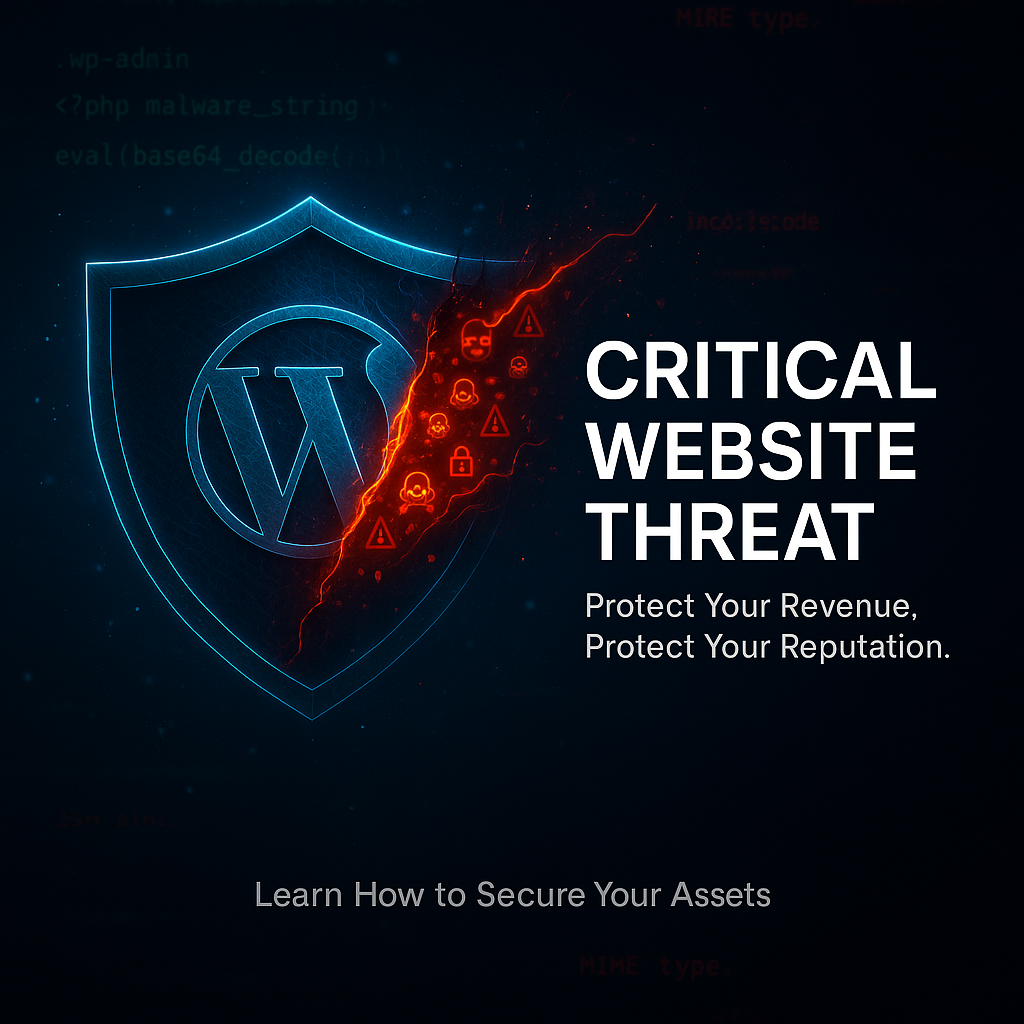In the dynamic world of digital business, your WordPress website is more than just a tool—it’s a vital asset. As we step deeper into 2025, cyber threats have evolved rapidly, with malware becoming increasingly sophisticated. Whether you’re running a small blog or an enterprise-level ecommerce platform, a single infection can disrupt your operations, compromise sensitive data, and damage your brand’s credibility.
🧠 What is WordPress Malware?
WordPress malware refers to malicious software that infiltrates your website’s core files, plugins, themes, or database. It can take many forms:
- 🕷️ Backdoors
- 🦠 Redirects to malicious sites
- 🐛 Code injection
- 🔓 Phishing scripts
- 📦 Hidden payloads in plugins/themes
This malware allows hackers to manipulate your site, steal customer data, inject spam, or redirect visitors to harmful content—all without your knowledge.
🚨 Common Signs Your WordPress Site is Infected
Identifying malware early can prevent a full-blown crisis. Look for these red flags:
- Unusual traffic spikes or drops
- Your website redirects users to external sites
- Unknown admin users are appearing
- Google marks your site as“This site may be hacked.”
- Defaced pages or injected ads
- Sluggish performance or frequent crashes
- The hosting provider suspends your account
💣 How Malware Impacts Business Continuity
A malware infection doesn’t just impact your website—it hits your business where it hurts:
- 🧨 Loss of trust from customers
- 📉 Dropped search engine rankings
- 💸 Revenue losses from downtime or blacklisting
- 📧 Emails marked as spam due to a blacklisted domain
- 🧾 Legal liabilities (especially under data protection laws)
- 🔐 Compromised sensitive data (customer info, financial records)
In 2025, a fast and seamless online experience is not optional—it’s the expectation. Malware disrupts this, leading to real-world consequences.
🔍 2025 Trends: New Forms of WordPress Vulnerabilities
Cybersecurity experts predict a continued rise in:
- AI-generated malware that adapts to security tools
- Supply chain attacks via third-party plugins
- Sophisticated phishing kits embedded in themes
- Fileless malware (malware that exists only in memory)
- Attacks targeting headless CMS setups and REST APIs
This evolution requires website owners to shift fromreactive toproactive strategies.
🛠️ Why DIY Malware Removal Often Fails
Many website owners try using free plugins or Google-based fixes. Unfortunately:
- 🔄 Malware regenerates even after deletion
- 🔍 Hidden payloads remain undetected by basic tools
- ❌ Most plugins don’t clean your database or core files fully
- 🧱 Without fixing the vulnerability, reinfection is inevitable
- 🔄 Rollbacks may lose content or cause compatibility issues
Professional intervention is crucial not just to clean, but also to secure your site from future attacks.
🧪 Real-World Case Study (Fictionalized for Privacy)
Case: A Fashion E-commerce Startup
A fashion retailer noticed a drop in sales and that Google Ads were being disapproved. Upon inspection, it was discovered that malware had injected spammy redirects in the product pages. Their website was blacklisted, email campaigns stopped converting, and customers started reporting phishing attempts.
Resolution involved:
- Complete file and database cleanup
- Rebuilding core files from clean backups
- Removing the backdoor from a third-party plugin
- Implementing server-level WAF (Web Application Firewall)
- Re-indexing the website with Google after blacklist removal
Result? They restored sales within 10 days and avoided what could have been a full business shutdown.
🔁 Why Ongoing Security Monitoring Matters
Cleaning malware once is not enough. Constant vigilance is required:
- Real-time scanning of files and traffic
- Regular plugin/theme vulnerability patching
- Monitoring suspicious login attempts
- Blocking malicious IPs and bots
- Early detection reduces downtime and prevents major losses
Think of it as a24/7 digital security guard for your business.
🧯 Prevention Tips: How to Reduce Risk
While no website is 100% immune, you can harden your security by:
- 🔐 Using strong admin passwords and limiting login attempts
- 📦 Deleting unused plugins and themes
- 🕒 Scheduling regular backups to off-site locations
- 🛡️ Installing a premium firewall and malware scanner
- 📈 Keeping everything updated, especially WordPress core
⚖️ Free Plugins vs. Professional Malware Cleanup
| Feature | Free Plugins | Professional Services |
| Surface-level scans | ✅ | ✅ |
| Deep file & DB inspection | ❌ | ✅ |
| Guarantee of a clean site | ❌ | ✅ |
| SEO & blacklist restoration | ❌ | ✅ |
| Prevention setup included | ❌ | ✅ |
Free tools are good for quick checks, but they won’t save your SEO, data, or brand if a serious infection occurs.
⏱️ Fast Response = SEO & Revenue Saved
Time is critical. A 24-hour delay in response can:
- Lead to Google de-indexing your site
- Get your email domain blacklisted
- Kill your paid campaigns (Google Ads disapproval)
- Erode customer trust permanently
A fast cleanup not only recovers your site but alsoprotects your revenue, rankings, and reputation.
🧠 Bonus Insight: Malware + Performance = Disaster
Infected sites often suffer from:
- Increased server load
- Slower load speeds due to injected scripts
- Higher bounce rates and cart abandonment
Cleaning up malware improves site speed, indirectly boosting SEO and conversion rates.
🤔 FAQ: Clearing Up Myths About WordPress Malware
Q: My hosting plan has malware scanning. Am I safe?
A: Scanning ≠ Removal. Most hosting providers don’t fix infected sites—they suspend them.
Q: If I reinstall WordPress, will the malware go away?
A: Not always. Malware can hide in the uploads folder, database, and even .htaccess files.
Q: Do SSL certificates stop malware?
A: No. SSL secures data transmission, not malware infections.
🏁 Final Thoughts: Don’t Wait Until It’s Too Late
Malware is not just an IT issue—it’s a business continuity threat. In 2025, your digital presence directly impacts your reputation, sales, and survival. Taking actionbefore a crisis strikes is the only way to stay resilient.
🛑 Don’t wait for your traffic to drop.
🧹 Clean up your site.
🛡️ Secure it permanently.
📈 Focus on growth, not firefighting.

